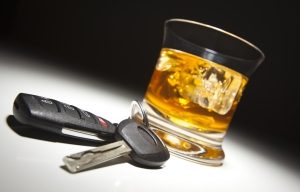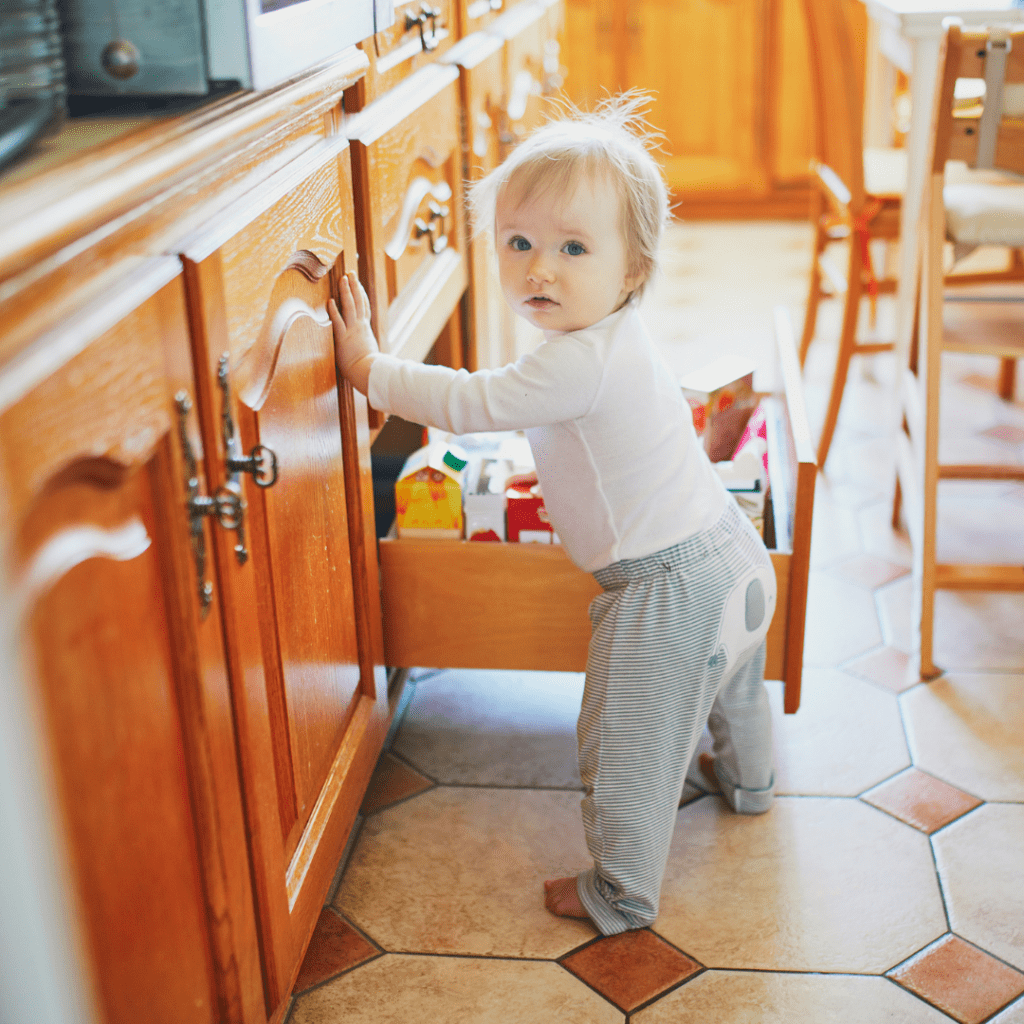
Childproofing your home becomes more of a priority as soon as a little one enters the picture. From sharp corners to electrical outlets, everyday items turn into serious hazards that could lead to life-threatening injuries. This is why you should make childproofing your home a priority. Let’s walk through some tips to create a safe, nurturing space for your child to learn and grow.
When To Child-Proof
You may want to start childproofing your home before your baby is mobile. This is usually around 4 to 6 months old. As soon as your baby starts to crawl and move around the house more, you’ll want to make sure things are not as easily accessible. Keep in mind that even though you may have thoroughly made changes to keep your child safe in the home, they still must be under supervision.
Steps To Take To Protect Your Child
This is not in any particular order; however, they are important.
- Removing cleaning products, detergents, and chemicals from the child’s reach.
- Properly lock away all medications, whether they are prescribed or over-the-counter.
- Sharp corners should be properly covered to prevent injuries if a child runs into them. Corner guards are easy to purchase and apply.
- Make sure that all furniture is secured. You may do this by using straps, brackets, or anchors. This is especially important for heavy pieces of furniture.
- Safety gates are a well-known child-proofing concept that keeps small children out of areas they shouldn’t be in.
- Use child locks on drawers and cabinets that may house harmful tools such as knives and scissors.
- Outlet covers are very accessible and important when there are children of any age in the home.
- Be sure to hide any loose cords and secure any cords that are attached to electrical devices to prevent tripping.
- Doorknob covers should be attached to prevent children from wandering out of the house or into any rooms they should not be in.
- Adding a non-slip mat to the tub will help keep your little one from slipping.
- Keep age-appropriate toys available and soft flooring to avoid injuries. All toys will have age requirements labeled clearly on the front of the item.
- Regularly evaluate your smoke alarms and security alarms.
- Keep emergency numbers in an easily accessible and visible area for babysitters or caretakers.
Drowning Accidents
Drowning accidents are the leading cause of death for children between the ages of 1-4 and the second leading cause of unintentional injury for children ages 5-14. If you own a pool or plan to visit the pool or beach with your child, be sure they are never left unattended.
It is important to ensure that your child is not running around the pool, as this could easily lead to a slip and fall. Utilize any safety equipment nearby in the event of an emergency. Life jackets or floating devices are important for young children, even if they may already know how to swim. It may also be beneficial to take a certification class for CPR if your child or any person may have stopped breathing due to drowning.
Know that there is a difference between infant/child and adult CPR. An adult’s chest bone (sternum) is deeper and more rigid, meaning compressions will have more depth than those for a smaller and more fragile child.
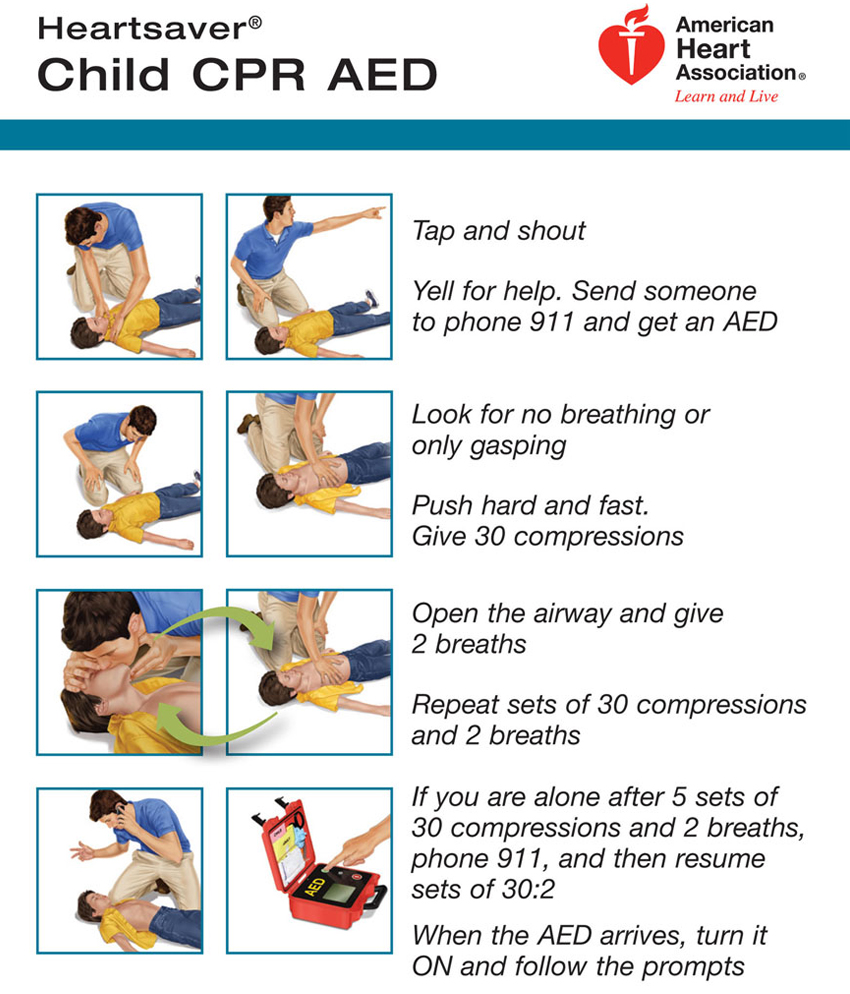
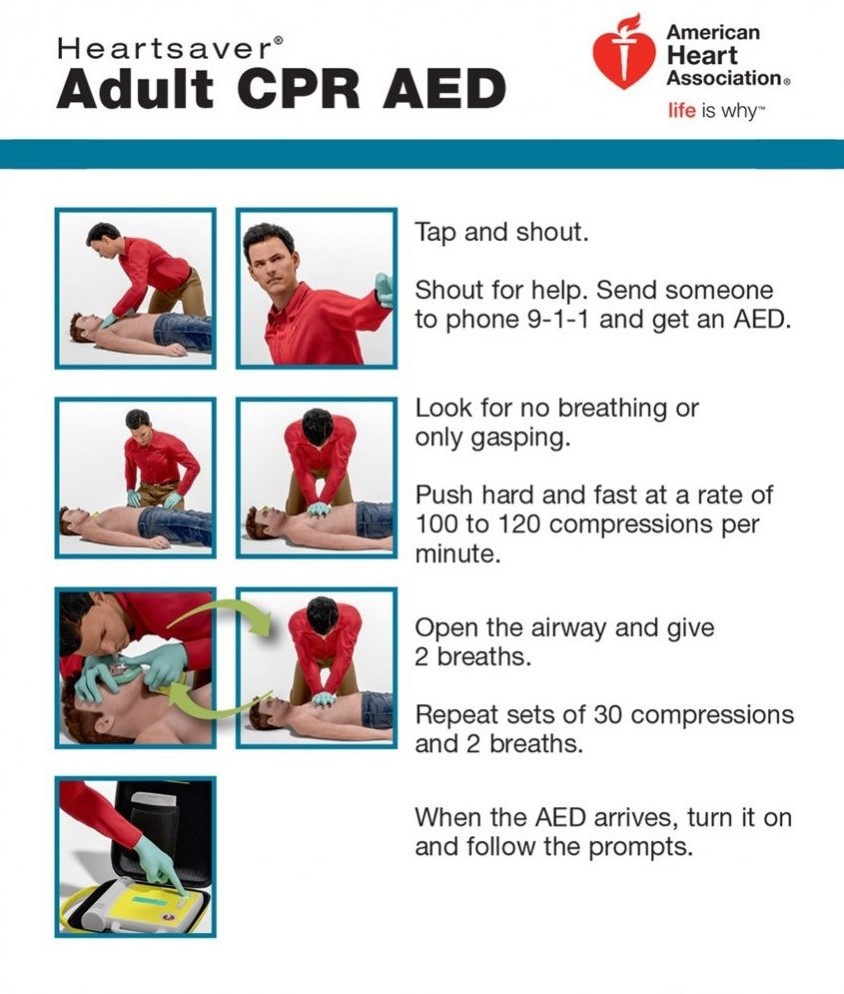
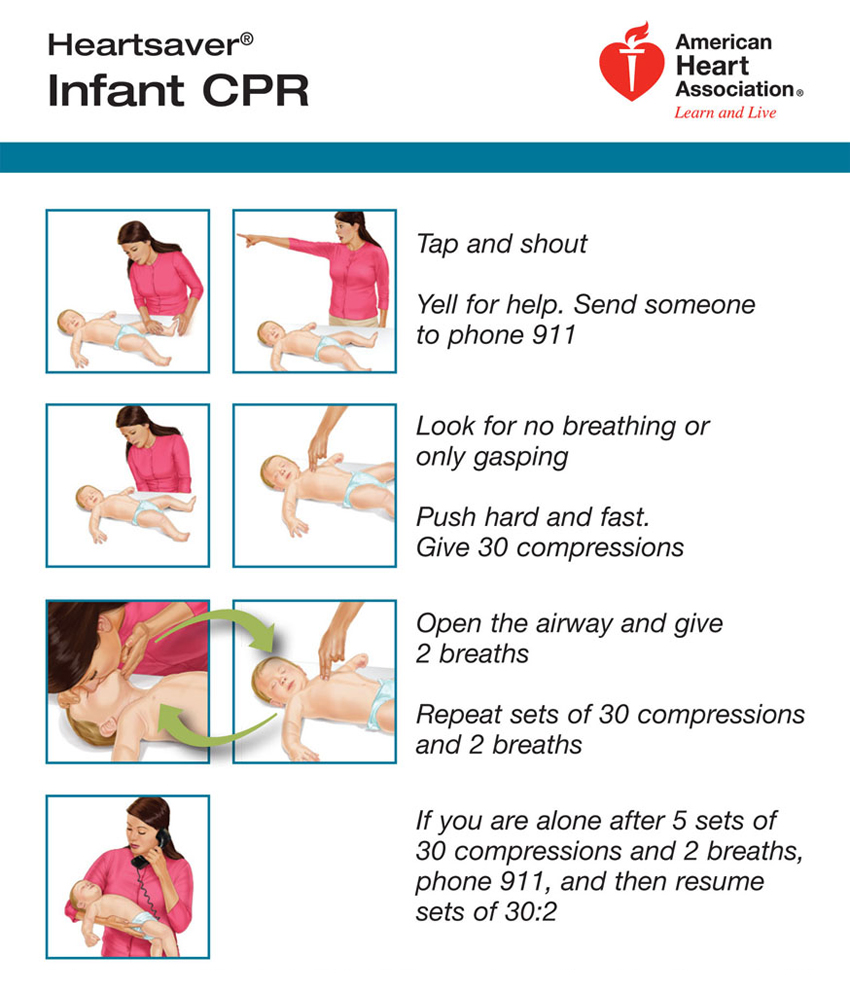
Image Credits to The American Heart Association
Car Safety
Another leading cause of death in young children is motor vehicle crashes. 1 in every 4 unintentional injury deaths for children is the result of a car crash.
Proper use of seat belts, booster seats, or car seats can significantly decrease this risk. Seat belts can start being used between the ages of 8 and 12 years old, for children younger you need a car seat or booster seat. Read our latest Car Seat Safety blog on proper use, installation, and disposal of damaged car seats.
SIDS
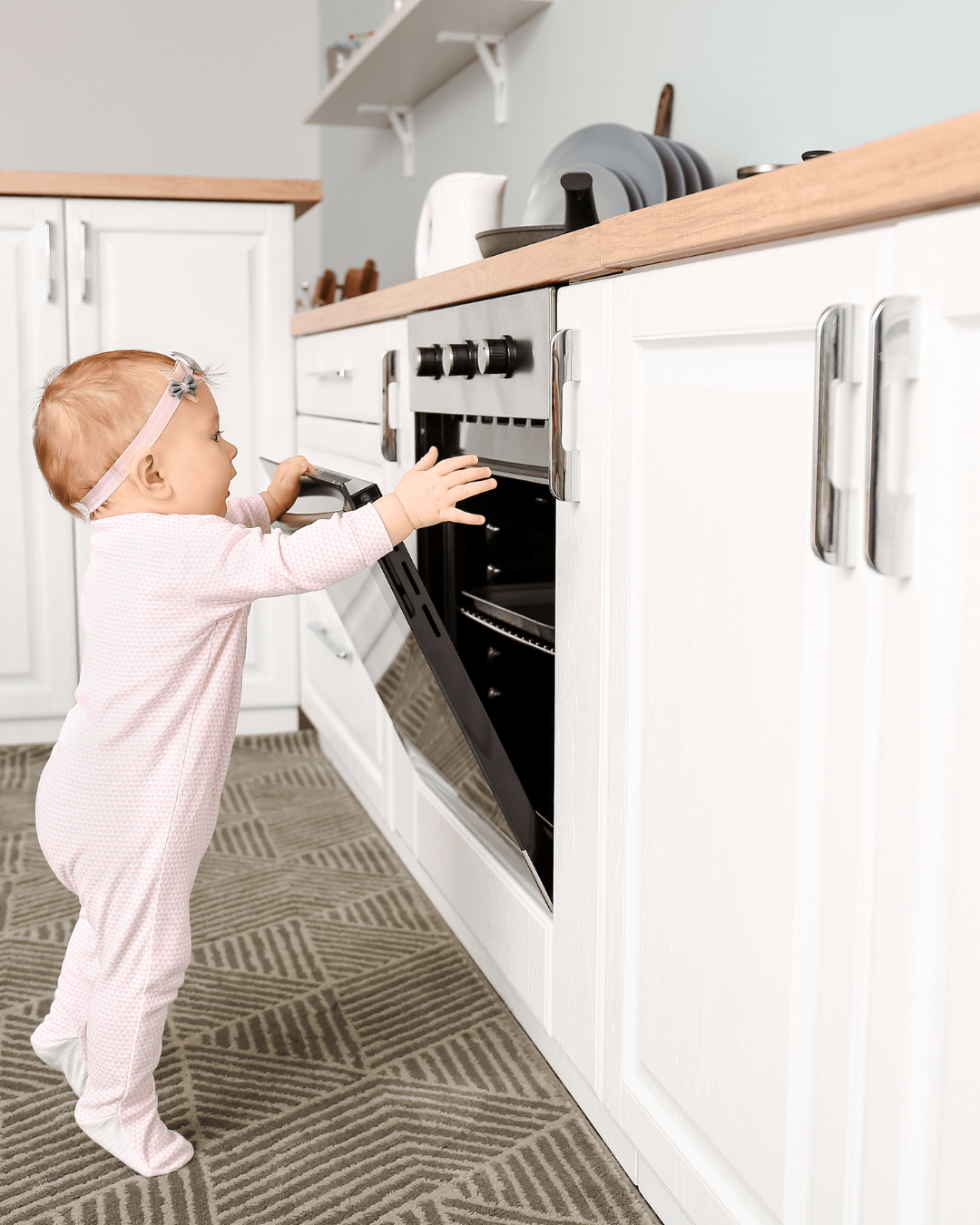
Parents should also be aware of the risk of SIDS (sudden infant death syndrome) while the child is young. Annually, there are about 2,500 infants who die from SIDS.
Most of the time, SIDS is an unexplained death, but some factors can increase the risk:
- Preterm birth or low birth weight
- Being a twin
- Delayed or no prenatal care
- An unsafe sleeping environment
- Overheating
- Exposure to alcohol during or after pregnancy
- Exposure to smoking during or after pregnancy
There are some things that you can do to help prevent SIDS.
- Avoid sharing a bed with your baby. Sharing a bed with your baby may increase the chances of SIDS by 50%.
- Don’t keep loose blankets or pillows in the crib. This can increase the chances of suffocation.
- Having your baby sleep on their back is the safest position. At this stage of development, their muscles are not fully developed, and they will struggle to pull their head up.
- Stay away from tobacco or alcohol. If your baby is exposed to these substances during or after pregnancy, it may increase the chances of SIDS.
- Make sure that your baby is seeing their pediatrician or healthcare provider regularly. Routine care visits will ensure that your baby is in good health.
FAQ
Are outlet covers necessary for my child?
Yes. They prevent electrical shock. This is a danger to little ones, especially at a younger age when they may be tempted to stick their fingers into outlets.
What cabinets should I install childproof locks on?
Cabinets that store tools, sharp objects, toxic chemicals, or medications should always have a child-proof lock installed.
How should I childproof the bathroom?
You may benefit from using toilet locks and non-slip floor mats. Keep razors or any sharp objects locked away or out of reach.
Jones & Swanson hope you and your children stay safe.
Jones & Swanson wants all parents to know it is important that you be proactive in protecting your child from unsuspecting dangers. Many everyday items and activities could be the determining factor in whether your child is at risk for a catastrophic and life-threatening accident.
Jones & Swanson Is A Personal Injury Firm, If You Or Someone You Know Has Been In A Car Accident, Slip And Fall Or Dog Bite, Seek Immediate Medical Assistance, Then Give Us A Call At (770) 427-5498 Or contact Us On Awjlaw.com for A Free Consultation To Find Out The Next Steps You May Want To Take.
Categories: Auto Accidents, Car Accident, Car Seat Safety, Catastrophic Injuries, Drowning Accidents, Pool Accidents, Safety Tips, Slip and Fall




